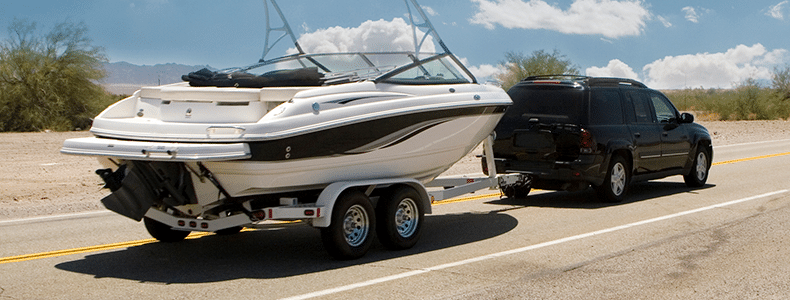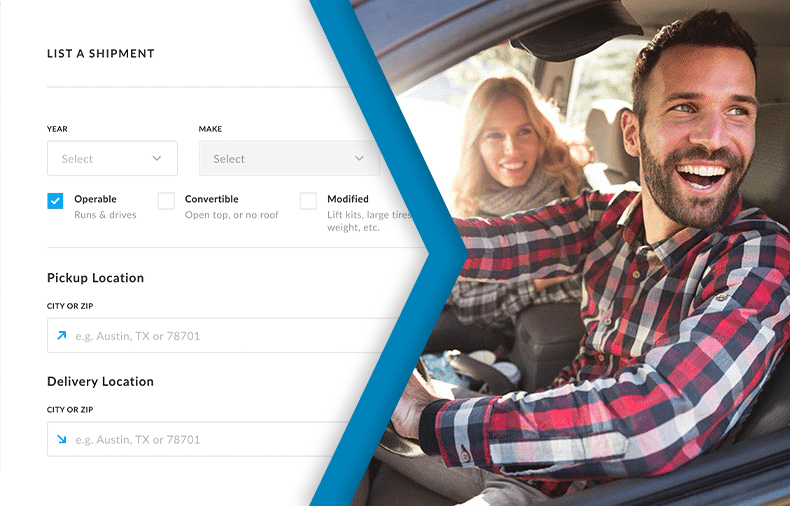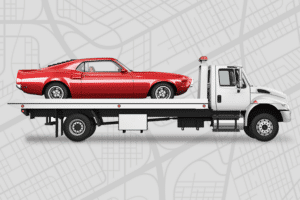At uShip, our online marketplace connects people and businesses that need to ship vehicles, equipment, and other large items with carriers willing to provide transportation and delivery services. On our easy-to-use platform, customers can list their shipment details, and carriers can bid for the chance to fulfill the delivery. This results in competitive pricing and options to choose from. However, the quoted prices can also vary significantly depending on key factors, like seasonality, vehicle type, and more.
Understanding what drives these price differences in vehicle shipping costs on uShip is important for both shippers and carriers. Shippers aim to get the best value by choosing a reasonably priced, reliable carrier. Meanwhile, carriers try to bid profitably while providing fair pricing that accounts for fuel costs, distance, timing demands, vehicle type, location, and other shipment specifics.
Overall, gaining insight into vehicle shipping costs and pricing reasons empowers uShip users to make the most of the service. In this blog, we’ll cover the key elements that cause variations in the cost to ship a vehicle between different listings so you can make the best decision for your budget.
WHY DO PRICES VARY ON USHIP?
Vehicle shipping costs on uShip can vary significantly due to several key factors, like seasonality, vehicle type, carrier availability, and more. Understanding these factors can help you make informed decisions and choose the most suitable shipping service for your needs and budget.
DISTANCE AND ROUTE SPECIFICITY
The distance between the pickup and delivery location is one of the primary factors affecting shipping prices. Generally, longer distances result in higher costs. For example, shipping a car from New York to Los Angeles (approximately 2,800 miles) will likely cost more than shipping from New York to Chicago (roughly 800 miles).
However, the specific route also matters. Shipping along popular routes with high carrier density may be more cost-effective than shipping to remote or less-frequented locations, even if the distances are similar.
VEHICLE TYPE AND SIZE
The type and size of the vehicle being shipped also play a significant role in pricing. Larger vehicles, such as SUVs and pickup trucks, require more space on the transport carrier and may consume more fuel, resulting in higher shipping costs compared to smaller cars.
For instance, shipping a compact car like a Honda Civic may cost around $600 for a 500-mile trip, while shipping a large SUV like a Chevrolet Suburban could cost upwards of $800 for the same distance.
TRANSPORT TYPE (OPEN VS. ENCLOSED)
On uShip, our carriers offer two main types of vehicle transport: open and enclosed. Open transport, where vehicles are shipped on an open trailer exposed to the elements, is the most common and economical option.
Meanwhile, enclosed transport, which provides added protection from weather and road debris, is more expensive.
SEASONALITY AND DEMAND
Shipping prices can fluctuate based on seasonal demand. Summer months and early fall tend to be the busiest times for vehicle transport, as people are more likely to relocate or purchase vehicles during these periods. Higher demand can lead to increased prices.
Conversely, shipping during the winter months may be more cost-effective due to lower demand, provided that the route is not affected by adverse weather conditions.
ADDITIONAL SERVICES
Customers may require additional services, such as door-to-door delivery or expedited shipping, which can impact the overall cost. Door-to-door service, where the carrier picks up and delivers the vehicle as close to the specified addresses as legally and safely possible, may cost more than terminal-to-terminal shipping.
Expedited shipping, which prioritizes your vehicle for faster delivery, can also command a premium.
COMPARING DIFFERENT VEHICLE SHIPPING SERVICES

When you need to ship a vehicle, whether it’s a car, truck, or motorcycle, choosing the right shipping service is crucial. Here’s a quick guide on how to compare different vehicle shipping services effectively on uShip.
SERVICES OFFERED ON USHIP
At uShip, our platform connects individuals and businesses with a wide range of shipping service providers. Here are some of the services you can find:
- Open transport: Your vehicle is shipped on an open trailer, exposed to the elements.
- Enclosed transport: Your vehicle is shipped in a fully enclosed trailer, providing extra protection.
- Door-to-door shipping: Your vehicle is picked up and delivered directly to your specified locations.
- Terminal-to-terminal shipping: You drop off your vehicle at a designated terminal, and it’s shipped to another terminal for pickup.
HOW TO USE USHIP TO COMPARE VEHICLE SHIPPING COSTS
Not sure how to set your shipping budget? Our user-friendly shipping marketplace can help you estimate the cost of shipping your vehicle. Follow these steps:
- Visit uship.com/ship and select vehicles.
- Enter your vehicle’s details, including make, model, and year.
- Specify the pickup and delivery locations.
- Click “Continue” to to see instant estimates and price ranges for your type of vehicle shipment.
TIPS FOR COMPARING QUOTES EFFECTIVELY
When comparing quotes from different vehicle shipping services, consider the following tips:
- Get multiple quotes: Request quotes from several service providers to get a better sense of the market rates.
- Compare apples to apples: Ensure that the quotes you’re comparing offer similar services, such as open or enclosed transport and door-to-door or terminal-to-terminal shipping.
- Check reviews and ratings: Look for customer reviews and ratings for each service provider to gauge their reliability and quality of service.
- Consider the timeline: Pay attention to the estimated pickup and delivery dates to ensure they align with your needs.
- Ask about insurance: Verify that the service provider offers adequate insurance coverage for your vehicle during transport or purchase a uShip Protection Plan for total peace of mind.
- Don’t automatically choose the lowest price: While price is important, it shouldn’t be the only factor. Consider the overall value, including the level of service and the provider’s reputation.
FACTORS INFLUENCING CAR SHIPPING COSTS
Several factors can impact the overall cost of shipping a car. Understanding these factors can help you make informed decisions and potentially save money on your car shipping expenses. Let’s explore each factor one by one.
DISTANCE
The distance between the pickup and delivery locations is one of the most significant factors affecting car shipping costs. Longer distances generally result in higher prices. For example, shipping a car from New York City to Los Angeles (2,789 miles) will cost more than shipping a car from New York City to Chicago (790 miles).
VEHICLE SIZE AND WEIGHT
Shipping a large SUV like a Chevrolet Suburban will cost more than shipping a compact car like a Honda Civic. Larger and heavier vehicles, such as SUVs and trucks, cost more to ship than smaller, lighter cars. This is because they take up more space on the transport truck and require more fuel to transport.
VEHICLE CONDITION
Shipping a non-running car that requires a winch or special equipment to load and unload may cost an additional $150 compared to shipping a running vehicle. If your car isn’t in running condition, it may require special equipment to load and unload, which can increase the shipping cost.
SHIPPING METHOD
There are two primary shipping methods: open transport and enclosed transport. Open transport is less expensive but exposes your vehicle to the elements. Enclosed transport offers more protection but comes at a higher price. For instance, shipping a car using enclosed transport may cost more than using open transport for a cross-country shipment.
SEASONALITY
Shipping costs can vary depending on the time of year. Summer months and holidays tend to be more expensive due to higher demand. Transporting a car in July (peak season) may cost more than shipping the same car in February (off-peak season).
FUEL PRICES
Fluctuations in fuel prices can impact car shipping costs, as carriers must account for these expenses in their pricing. For example, if fuel prices increase by 20%, a car shipping quote may increase by $100 to account for the higher fuel costs.
INSURANCE
Most carriers include basic insurance coverage in their quotes. However, requiring additional coverage may increase the overall cost. You can also purchase a uShip Protection Plan for competitively priced protection.
EXPEDITED SHIPPING
If you need your car shipped urgently, expedited shipping options are available, but they come at a premium price. Choosing expedited shipping with a guaranteed delivery date may cost extra compared to standard shipping with a wider delivery window.
HOW TO SAVE MONEY ON CAR SHIPPING
- Plan ahead: Booking your car shipment well in advance can often result in lower prices and more flexibility in scheduling.
- Be flexible with timing: If you can be flexible with your shipping dates, you may be able to secure a lower rate by avoiding peak seasons and holidays.
- Choose open transport: If your vehicle doesn’t require special protection, choosing open transport over enclosed transport can save you money.
- Opt for terminal-to-terminal shipping: Opting for terminal-to-terminal shipping, where you drop off and pick up your car at designated locations, can be less expensive than door-to-door shipping.
- Compare quotes: Get quotes from multiple carriers and compare their prices and services to find the best deal. Luckily, uShip makes this process easy and efficient.
- Ask about discounts: Some carriers offer discounts for military personnel, students, or repeat customers. Don’t hesitate to ask if you qualify for any discounts.
- Remove personal items: Remove all personal items from your car before shipping, as they can add weight and increase the shipping cost. Additionally, most carriers don’t insure personal items during transport.
- Consider shipping multiple cars: If you need to ship more than one vehicle, some carriers offer discounts for multiple-car shipments.
MOTORCYCLE SHIPPING RATES EXPLAINED
When it comes to shipping your two-wheeled pride and joy, several elements come into play, including:
SIZE AND WEIGHT
The dimensions and weight of your motorcycle can have a significant impact on the shipping cost. For instance, shipping a hefty Harley-Davidson Ultra Classic will likely cost more than transporting a sleek Yamaha R3 due to the extra space and effort required to secure the larger bike.
RUNNING CONDITION
Another crucial factor is your motorcycle’s running condition. Is your motorcycle in tip-top shape, or does it need some TLC? Non-running motorcycles or those with mechanical issues may need additional preparation and handling. For example, if your vintage Honda CB750 isn’t running, the carrier may need to use specialized equipment to load and unload it, which can bump up the shipping price.
SHIPPING METHOD
When it comes to the mode of transport, you have two options: open or enclosed. Open transport is the more budget-friendly choice, as your motorcycle will be loaded onto an open trailer alongside other vehicles. However, suppose you have a high-value or custom motorcycle, like a Ducati Panigale V4 R. In that case, you may opt for enclosed transport, which offers superior protection from the elements and road debris at a premium price.
DISTANCE
The distance between the pickup and delivery locations also plays a crucial role in determining the cost. As with any shipping endeavor, the farther your motorcycle needs to travel, the more you can expect to pay. Shipping a Suzuki GSX-R600 from Los Angeles to New York will undoubtedly cost more than transporting it from Los Angeles to San Francisco.
SEASONALITY
Timing is everything when it comes to motorcycle shipping. Shipping your motorcycle during peak seasons, such as summer and holidays, can result in higher rates due to increased demand. For instance, shipping your Kawasaki Ninja 400 in July may cost more than shipping it in February. If you have the flexibility, consider shipping during off-peak periods to snag a better deal.
INSURANCE COVERAGE
Lastly, insurance matters. While most motorcycle shipping companies include basic insurance coverage, high-value bikes or those requiring extra peace of mind may benefit from added protection. For example, if you’re shipping a rare vintage Vincent Black Shadow, you may want to purchase additional coverage to ensure your investment is fully protected. Just keep in mind that this can add to the overall cost of shipping your motorcycle.
COST-SAVING TIPS FOR MOTORCYCLE TRANSPORT
- Plan ahead: Booking your motorcycle shipment well in advance can often result in lower rates and more flexibility in scheduling. Last-minute shipments may be subject to higher prices due to limited carrier availability.
- Compare quotes: Request quotes from multiple motorcycle carriers and compare their rates and services. Don’t automatically choose the lowest price. Instead, consider factors such as the company’s reputation, insurance coverage, and customer reviews.
- Be flexible with timing: If your schedule allows, consider shipping your motorcycle during off-peak seasons to take advantage of lower rates. Avoiding peak summer months and holidays can save you money.
- Choose open transport: If your motorcycle doesn’t require the added protection of enclosed transport, opting for open transport can be a cost-effective choice. Open transport is the most common method for shipping motorcycles and is generally less expensive than enclosed transport.
- Prepare your motorcycle: Before shipping, ensure your motorcycle is in good condition and properly prepared for transport. Remove any loose items, turn off the alarm, and document any pre-existing damage. Proper preparation can help avoid additional fees and potential damage during transport.
BOAT TRANSPORT SERVICES ON USHIP

Shipping a boat presents unique challenges that require specialized expertise and equipment. On uShip, our platform connects boat owners with experienced and reliable boat transport service providers, making the process of shipping boats more convenient and efficient.
When it comes to boat shipping, there are several factors to consider:
- Size and weight of the boat
- Distance between the pickup and delivery locations
- Type of boat (e.g., sailboat, motorboat, yacht)
- Boat condition and any special requirements
Our network of boat transport service providers is equipped to handle a wide range of boat types and sizes, ensuring that your boat receives the care and attention it needs during transport.
To prepare your boat for transport, follow these steps:
- Clean your boat thoroughly, both inside and out, to avoid any debris or dirt from damaging the boat during transport.
- Remove all personal items and loose gear from the boat, including electronics, fishing equipment, and any other valuables.
- Secure all hatches, doors, and windows to prevent them from opening during transport.
- Disconnect the battery and secure it in place to avoid any electrical issues during transport.
- If your boat has a trailer, ensure that the trailer is in good condition and properly functioning, with working brakes, lights, and tires.
- Provide clear and detailed instructions to the boat transport service provider regarding any special handling requirements or concerns you may have.
RV AND HEAVY EQUIPMENT TRANSPORT
Shipping RVs and heavy equipment presents unique challenges that require specialized knowledge, experience, and equipment. These large, heavy, and often expensive items demand careful handling and attention to detail throughout the shipping process.
SPECIAL REQUIREMENTS FOR RV AND HEAVY EQUIPMENT SHIPPING
When shipping RVs and heavy equipment, there are several special requirements to consider:
- Size and weight: RVs and heavy equipment come in various sizes and weights, which can impact the type of transport vehicle needed, the routes available, and the overall shipping cost.
- Permits and regulations: Depending on the size and weight of the RV or heavy equipment, special permits and adherence to state and federal regulations may be required for transport.
- Loading and unloading: Specialized equipment, such as ramps, cranes, or forklifts, may be necessary to safely load and unload RVs and heavy equipment onto the transport vehicle.
ESTIMATING COSTS AND CHOOSING THE RIGHT SERVICE
To estimate the cost of shipping your RV or heavy equipment, consider the following factors:
- Distance: The distance between the pickup and delivery locations significantly impacts the overall shipping cost. Longer distances generally result in higher prices.
- Size and weight: Larger and heavier items typically cost more to ship due to the need for specialized transport vehicles and additional fuel consumption.
- Shipping method: RVs and heavy equipment can be shipped via open or enclosed transport. Enclosed transport provides added protection but is more expensive.
- Timeframe: If you require expedited shipping or have a specific delivery date in mind, it may increase the overall cost of transport.
When choosing a service provider for your RV or heavy equipment transport needs, consider the following:
- Experience: Look for a carrier with a proven track record of successfully shipping RVs and heavy equipment.
- Equipment: Ensure that the carrier has the appropriate transport vehicles and equipment to handle your specific RV or heavy equipment safely.
- Insurance: Verify that the carrier offers adequate insurance coverage for your RV or heavy equipment during transport.
- Reviews: Read customer reviews and testimonials to gauge the carrier’s reputation and the quality of its services.
BENEFITS OF USING USHIP FOR VEHICLE SHIPPING
When it comes to shipping your vehicle, whether it’s a car, motorcycle, boat, RV, or heavy equipment, uShip offers a range of benefits that make the process more convenient, secure, and transparent. Let’s explore some of the key advantages of using our platform for your vehicle shipping needs.
SECURITY AND PROTECTION
One of the primary concerns when shipping a vehicle is ensuring its safety and security throughout the transport process. We understand this concern, and we prioritize your vehicle’s security. Our platform makes it easy to review a carrier’s credentials and insurance coverage, making it easy to protect your vehicle against potential damages during transit.
Moreover, we offer additional protection through our uShip Protection Plan, which provides added peace of mind for high-value vehicles or those requiring extra coverage.
ACCESS TO A VAST NETWORK OF CARRIERS
Our platform boasts an extensive network of experienced and reliable carriers specializing in various types of vehicle shipping. This vast network allows you to access a wide range of options, ensuring that you can find a carrier that meets your specific needs and requirements.
Whether you need open or enclosed transport, door-to-door or terminal-to-terminal shipping, or have special requirements for your vehicle, our diverse network of carriers can accommodate your needs. This extensive network also promotes competitive pricing, as carriers bid on your shipment, allowing you to choose the best offer that balances cost and quality of service.
CUSTOMER REVIEWS AND TRANSPARENCY
One of uShip’s standout features is our commitment to transparency and customer satisfaction. The platform allows customers to leave reviews and ratings for carriers they’ve worked with, providing valuable insights for future customers.
These reviews cover various aspects of the shipping experience, such as:
- Communication and responsiveness of the carrier
- Timeliness of pickup and delivery
- Care and handling of the vehicle during transport
- Overall professionalism and reliability of the carrier
Access to these reviews empowers you to make informed decisions when selecting a carrier based on previous customers’ experiences. Additionally, our transparent pricing model ensures that you have a clear understanding of the costs associated with your vehicle shipment, with no hidden fees or surprises.
HOW TO CHOOSE THE RIGHT SHIPPING SERVICE ON USHIP
Selecting the right shipping service on uShip is crucial to ensure a smooth, safe, and satisfactory vehicle transport experience. With thousands of carriers available on our platform, it’s essential to consider several key factors when making your decision. Let’s explore how to choose the right shipping service.
EVALUATE CARRIER FEEDBACK AND RATINGS
These reviews offer insights into the experiences others have had with specific carriers, helping you make an informed decision. When evaluating carriers feedback and ratings, consider the following:
- Overall rating: Look for carriers with high overall ratings, as this indicates a history of positive customer experiences.
- Number of reviews: A higher number of reviews provides a more comprehensive picture of a carrier’s performance over time.
- Recent feedback: Pay attention to recent reviews to ensure that the carrier maintains a consistent level of service.
- Specific comments: Read through individual reviews to gain insights into specific aspects of the carrier’s service, such as their communication, punctuality, and vehicle handling.
UNDERSTAND INSURANCE AND SAFETY PROTOCOLS
Ensuring the safety and security of your vehicle during transport is paramount. When choosing a shipping service on uShip, it’s crucial to understand the insurance and safety protocols in place. Here are some key considerations:
Carrier insurance: Verify that the carrier carries adequate insurance coverage for your specific vehicle type and value.
Added protection For added peace of mind, consider purchasing additional protection through uShip, especially for high-value vehicles.
Safety measures: Inquire about the carrier’s safety protocols, such as vehicle inspection procedures, secure loading and unloading practices, and the use of appropriate equipment for your vehicle type.
COMMUNICATE EFFECTIVELY WITH CARRIERS
Clear and effective communication is essential for a successful vehicle shipping experience. When interacting with potential carriers on uShip, keep the following in mind:
- Be detailed and specific: Provide comprehensive information about your vehicle, including make, model, year, and any special requirements or modifications.
- Ask questions: Don’t hesitate to ask carriers about their experience, equipment, and shipping process to ensure they meet your needs and expectations.
- Discuss timing and logistics: Clearly communicate your desired pickup and delivery dates, as well as any flexibility you may have in your schedule.
- Confirm insurance and safety details: Verify the carrier’s insurance coverage and safety protocols to ensure your vehicle is adequately protected during transport.
COUNT ON USHIP FOR YOUR SHIPPING NEEDS
Now that you’ve gained a comprehensive understanding of vehicle shipping services and the advantages of using uShip, it’s time to take action.
With our user-friendly platform, competitive pricing, and commitment to customer satisfaction, we’re your trusted partner for all your vehicle shipping needs. Whether you need to ship a car, motorcycle, boat, RV, or heavy equipment, start your shipping journey today!
FREQUENTLY ASKED QUESTIONS ABOUT VEHICLE SHIPPING COSTS
Why do vehicle shipping prices vary so much?
Vehicle shipping prices vary due to factors like distance, vehicle size, shipping method, seasonality, and carrier availability.
How can I get an accurate quote for shipping my vehicle?
For an accurate quote, provide detailed information about your vehicle and shipping needs on uShip and compare quotes from multiple carriers.
What is the cheapest way to ship a car?
The cheapest way to ship a car is typically through open transport and terminal-to-terminal delivery.
Are there any hidden fees for vehicle shipping services?
Reputable vehicle shipping services on uShip provide transparent pricing without hidden fees. Always clarify what’s included in the quote.
How do I choose between open and enclosed transport?
Open transport is cheaper but exposes your vehicle to the elements, while enclosed transport offers more protection at a higher cost. Consider your vehicle’s value and your budget.
What is the best time of year to ship a vehicle?
The best time to ship a vehicle is during off-peak seasons, typically fall and winter, when demand and prices are lower.
How does uShip ensure the safety and security of my vehicle during transport?
We ensure vehicle safety through transparent reviews, protection options, and world-class customer support.
Can I ship a non-operational vehicle on uShip, and how does it affect the price?
You can ship a non-operational vehicle on uShip, but it may require special equipment and result in a higher shipping price.



